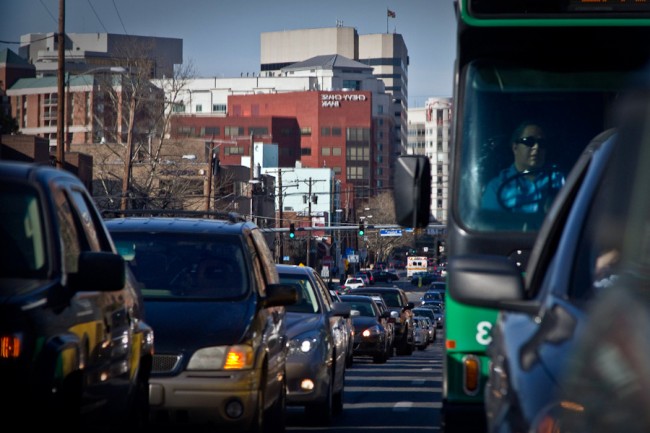A Country of Cities
A series of opinion pieces in which Vishaan Chakrabarti casts key current events as rallying cries in his evolving argument for urban density, for a Country of Cities.
We are celebrating 15 years — and counting — of stories that are deeply researched and deeply felt, that build a historical record of what the city has been.
Consider some simple math about people and land. If all of Earth’s six billion people were to live at the density we do here in the five boroughs of New York City, all of humanity would occupy less than one half of one percent of the earth’s land mass. Only one half of one percent, with the vast majority of the planet left unspoiled – it is extraordinary.
This equates to about 8% of the land mass of the continental U.S. — roughly the size of Texas. Yes folks, all of us, the entire planet, could live as New Yorkers in Texas.
According to the United Nations, by 2050 the population is supposed to soar to 9 billion, so at New York densities, the planet’s populace would occupy both Texas and a big chunk of New Mexico. This would mean that liberals too would have a place to live.
So the problem we have as a planet is not population growth. To the contrary, one only need look at the crisis unfolding in Europe to understand that population growth and immigration are critical to a sustainable economy.
No, the problem is not growth, but how that growth will physically manifest itself. With 75% of the population of the planet projected by the UN to live in large urban regions by 2050, the question facing us is whether we will live tall or live in sprawl — whether we grow while protecting nature rather than living in it.
And while this is the core environmental question of our epoch, it is also the core economic question.
Consider a 2001 study done at the University of Chicago, which examined all of the counties of the U.S. It found the “50-2” rule: 50% of the Gross Domestic Product of the United States is generated by a mere 2% of its land mass. Conversely, the study found that 50% of the land mass of the U.S. generates less than 2% of its GDP.
That same study found that New York City annually generates a staggering $1.5 billion per square mile of the country’s GDP.
With density comes prosperity, and prosperity should yield political power. Yet consistently we in New York City give billions of tax dollars to Albany and to Washington that never return, billions we could use to fund our much-needed infrastructure. Imagine the subways, the parks, the schools, the affordable housing, the high speed rail, the bike lanes we could build if we could keep a larger percentage of the wealth that our very lifestyle generates.
Yet, for example, at a recent Forum for Urban Design dinner held here in New York regarding America in 2050, we heard analyses that either purposefully ignored the subsidies that facilitate people’s choices to live in the suburbs, therefore skewing all the data presented, or we heard that in an attempt to densify America, the best we can hope for is “walkable urbanism,” the epitome of which apparently is – wait for it – Bethesda, Maryland! Well meaning as this may be, is Bethesda really the best we can hope for? A place where virtually everyone lives in a single family house and drives to get a quart of milk?
We need a far more coherent public voice for real urbanity and the infrastructure it needs to grow, a voice that speaks outside of the politics of both parties. The right tends to decry public spending. The left tends to favor entitlements over investments. The right tends to fight regulations that curb sprawl and prices carbon. The left fights for environmental regulations and bureaucracies that can imperil infrastructure. New York’s Moynihan Station project, which is on its fourth – yes, count it, fourth – Environmental Impact Statement, is a cautionary tale in this regard. Congestion pricing, at which we must take another shot if we are to be the twenty-first century city we imagine, was a bi-partisan failure.
So let us form a new infrastructure coalition, one that binds the needs of mobility and density. One that can rightfully claim that through smart urbanization, we can attack virtually every problem we read about on the front pages of our newspapers.
Study after study shows that dense urban environments, supported by the right transportation, lead to lower health care costs, less dependence on foreign oil, less risk of environmental accidents, less global warming, and more competitiveness.
As city dwellers we must win this fight to build a Country of Cities. Because we generate most of this country’s well being, because per capita we produce more while consuming less, we must demand our fair share. Put bluntly, this land is our land, because this land is made by you and me.
This is the sixth in a series of opinion pieces in which Vishaan Chakrabarti casts key current events as rallying cries in his evolving argument for urban density, for a Country of Cities.
The views expressed here are those of the authors only and do not reflect the position of The Architectural League of New York.
A series of opinion pieces in which Vishaan Chakrabarti casts key current events as rallying cries in his evolving argument for urban density, for a Country of Cities.


Comments